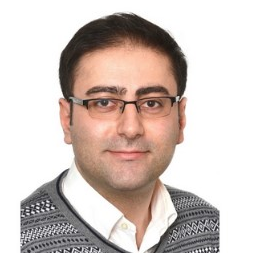Soft Matter Nanostructures—Fabrication, Interactions and Applications: In Honor of Prof. Dr. Michael Rappolt’s 60th Birthday
A special issue of Molecules (ISSN 1420-3049). This special issue belongs to the section "Macromolecular Chemistry".
Deadline for manuscript submissions: 31 October 2024 | Viewed by 3313
Special Issue Editor
Interests: nanoscience; physical chemistry; lipid biophysics; biomimetic self-assembly; X-ray scattering
Special Issues, Collections and Topics in MDPI journals
Special Issue Information
Dear Colleagues,
This Special Issue is dedicated to Professor Michael Rappolt on his 60th birthday. Professor Rappolt has contributed to the field of soft matter using various small- and wide-angle scattering techniques to investigate the structure, shape and flexibility of lipid-based model membranes.
Michael Rappolt holds a Leadership Chair of Lipid Biophysics at the School of Food Science and Nutrition at the University of Leeds. He is a leading authority on the use of various small- and wide-angle scattering techniques on investigating the structure, shape and flexibility of model membranes with various, ground-breaking achievements, concerning their nanostructural and mechanical analysis. His vision has always been building bridges between Physics (nanostructure of self-assembled soft matter), Biology (biointerfaces), Chemistry (response of membranes to environmental changes) and Applied Research (food, health and bioenergy sectors). Recently, his research focusses on the interplay of confined water in lipid self-assemblies with the aim to obtain a more holistic model of biomembrane interfaces.
Michael’s educational carrier started at the University of Hamburg, where he received his MSc in Physics in 1991. Thereafter, in 1995, he was promoted with ‘summa cum laude’ with his PhD thesis on “Time-Resolved X-ray Diffraction Studies on Model Membrane Phase Transitions”. These synchrotron light-based works were carried out at the European Biology Laboratories in Hamburg. After his time in Germany, he moved to Trieste in Italy in 1996, first working as a Post-Doctoral Fellow, then as Marie Curie Fellow (1998‒1999), and, later, as senior researcher at the Austrian Small-Angle X-ray Scattering Beamline until 2012. In this period, he was employed by the Academy of Sciences and, in the final year, by the Graz University of Technology. His growing networking activities in the lipid self-assembly research field, provided him with the opportunity to carry out his Habilitation at the University of Ljubljana in March 2011, just two years before he received an offer to work as a Professor of Lipid Biophysics at the University of Leeds.
Soft matter nanostructures, including polymers, colloids and biomolecules, have gained significant attention in recent years due to their unique properties and potential applications in various fields such as food, biomedicine, energy and materials science.
This Special Issue aims to bring together the latest advances in the fabrication, characterization and functionalization of soft matter nanostructures, as well as their interactions with each other and external stimuli. We welcome original research articles, reviews and perspectives on topics including but not limited to:
- Fabrication techniques for soft matter nanostructures, including templating, self-assembly and lithograph;
- Characterization techniques for soft matter nanostructures to reveal novel nanoscale features and their dynamics including in-operando techniques;
- Novel properties and applications of soft matter nanostructures, including drug delivery, functional food formulations, sensing and energy conversion;
- Interactions of soft matter nanostructures in the biological environment and/or their response to stimuli such as light, temperature, tension and electric fields;
- Theoretical and computational studies on the properties and behavior of soft matter nanostructures.
We invite researchers in the field to contribute their latest research to this Special Issue. We look forward to receiving your submissions.
Dr. Amin Sadeghpour
Guest Editor
Manuscript Submission Information
Manuscripts should be submitted online at www.mdpi.com by registering and logging in to this website. Once you are registered, click here to go to the submission form. Manuscripts can be submitted until the deadline. All submissions that pass pre-check are peer-reviewed. Accepted papers will be published continuously in the journal (as soon as accepted) and will be listed together on the special issue website. Research articles, review articles as well as short communications are invited. For planned papers, a title and short abstract (about 100 words) can be sent to the Editorial Office for announcement on this website.
Submitted manuscripts should not have been published previously, nor be under consideration for publication elsewhere (except conference proceedings papers). All manuscripts are thoroughly refereed through a single-blind peer-review process. A guide for authors and other relevant information for submission of manuscripts is available on the Instructions for Authors page. Molecules is an international peer-reviewed open access semimonthly journal published by MDPI.
Please visit the Instructions for Authors page before submitting a manuscript. The Article Processing Charge (APC) for publication in this open access journal is 2700 CHF (Swiss Francs). Submitted papers should be well formatted and use good English. Authors may use MDPI's English editing service prior to publication or during author revisions.
Keywords
- soft matter nanotechnology
- lipid membranes
- self-assembly techniques
- nanostructure characterization
- external stimuli response
- biointerfaces
- computational modeling of soft matter






